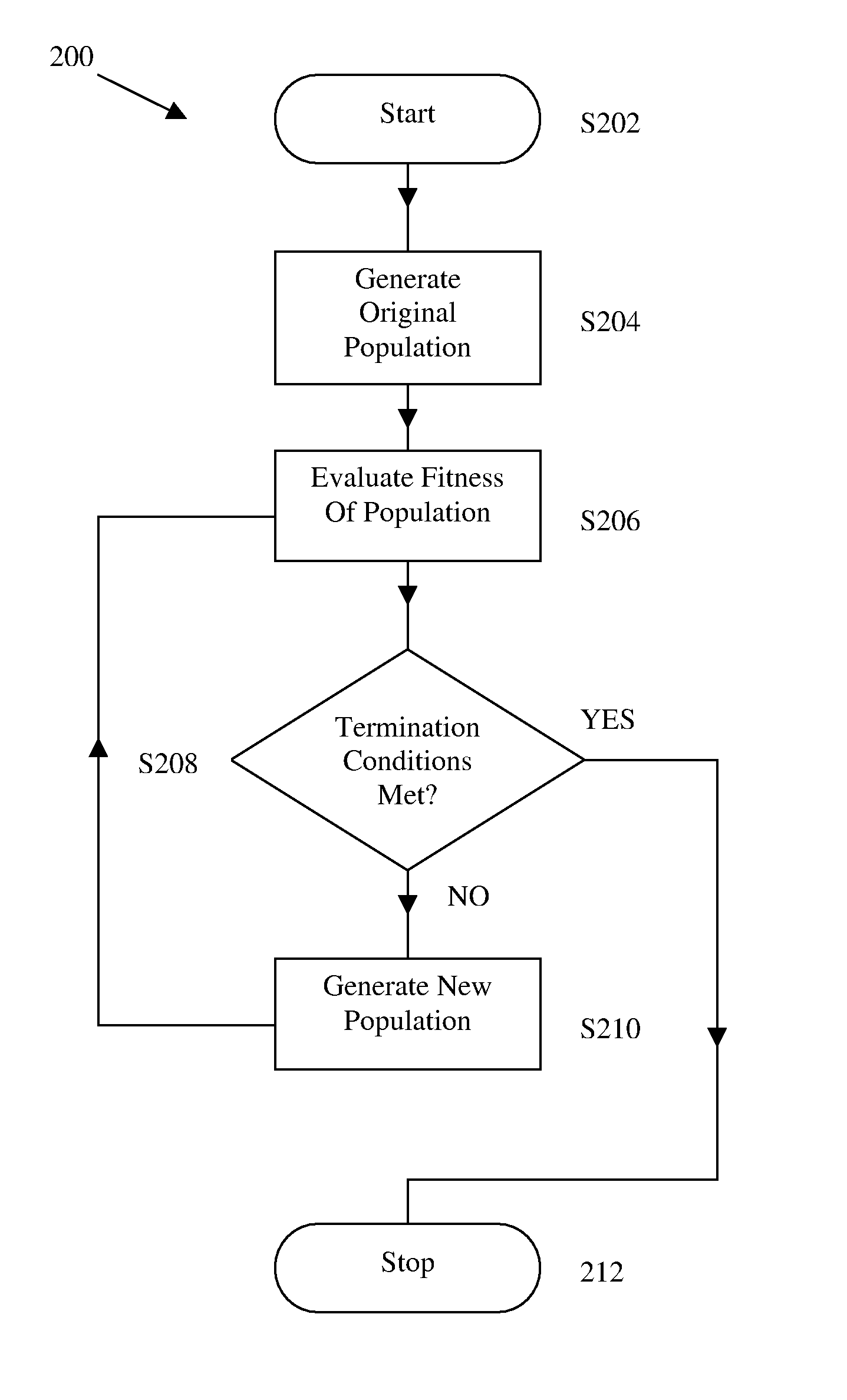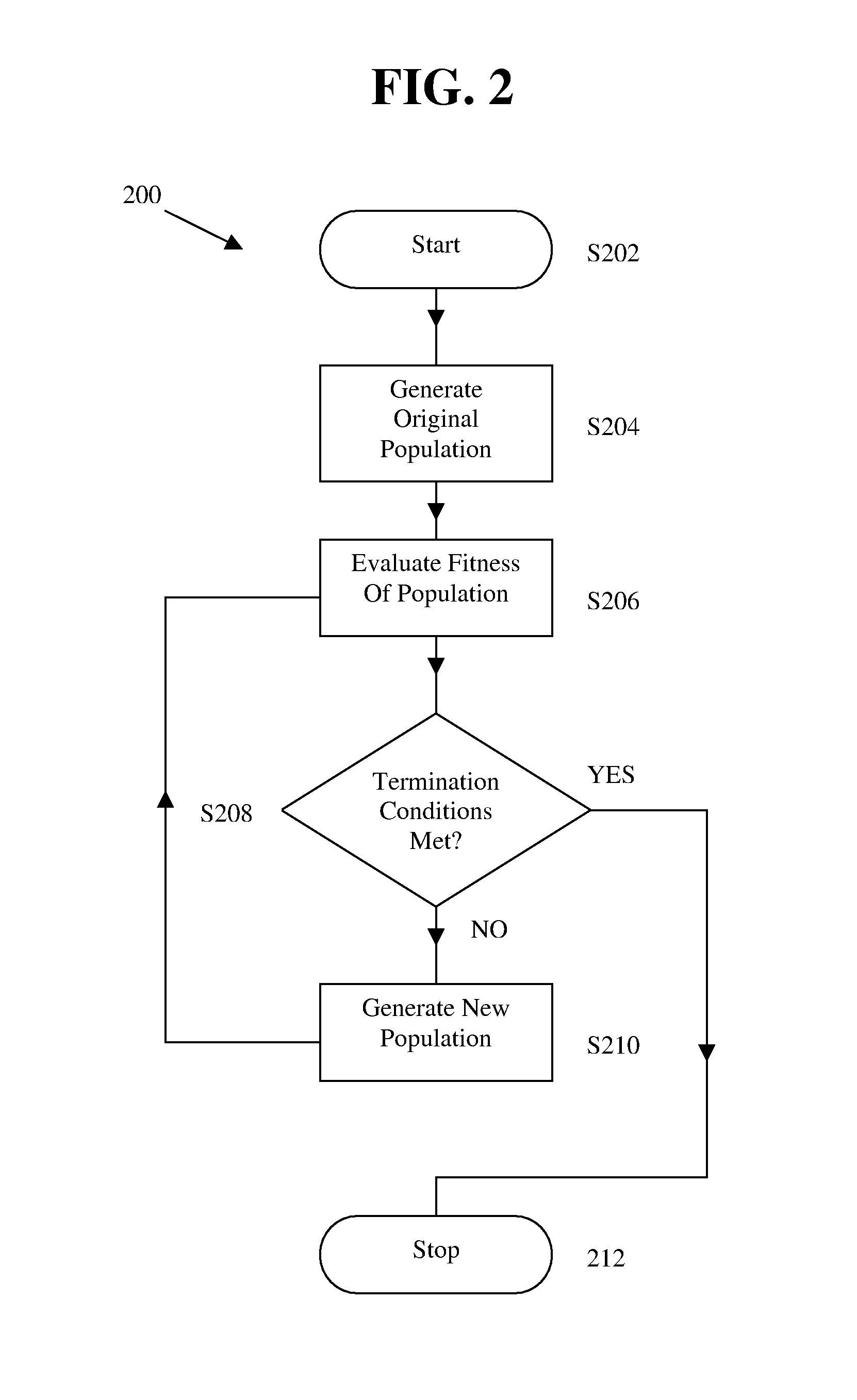Self-optimizing adaptive antenna
a technology of adaptive antenna and self-optimization, which is applied in the direction of thermoelectric devices, instruments, substation equipment, etc., can solve the problem of time-consuming process and achieve the effect of efficient optimization of positioning of receiving elements
- Summary
- Abstract
- Description
- Claims
- Application Information
AI Technical Summary
Benefits of technology
Problems solved by technology
Method used
Image
Examples
Embodiment Construction
[0025]FIG. 1 illustrates an exemplary antenna system in accordance with the present invention. In the figure, antenna system 100 includes antenna 102, signal strength measuring device 104, analog to digital converter (ADC) 106, processing system 108, and servo controller 110.
[0026]Antenna 102 includes base 112, first receiving element 114 and second receiving element 116. Base 112 is rotatable through angle w and thus has a single degree of freedom. First receiving element 114 has a first end that is moveably connected to base 112 and a second end. Specifically, first receiving element 114 is rotatable about its first end through an angle φ1 in a plane parallel to the top of base 112 and through an angle θ1 in a plane perpendicular to the top of base 112. As such, first receiving element 114 has two degrees of freedom. Second receiving element 116 has a first end that is moveably connected to base 112 and a second end. Specifically, second receiving element 116 is rotatable about it...
PUM
 Login to View More
Login to View More Abstract
Description
Claims
Application Information
 Login to View More
Login to View More - R&D
- Intellectual Property
- Life Sciences
- Materials
- Tech Scout
- Unparalleled Data Quality
- Higher Quality Content
- 60% Fewer Hallucinations
Browse by: Latest US Patents, China's latest patents, Technical Efficacy Thesaurus, Application Domain, Technology Topic, Popular Technical Reports.
© 2025 PatSnap. All rights reserved.Legal|Privacy policy|Modern Slavery Act Transparency Statement|Sitemap|About US| Contact US: help@patsnap.com



